![]()
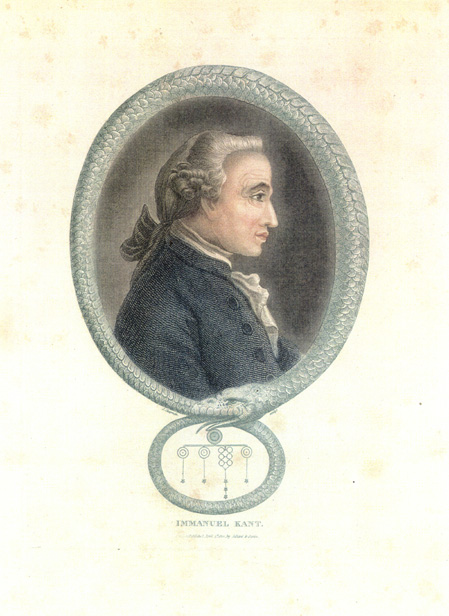
'Templeton sits immobile in his attic room, immersed in the deceptively erratic ticking of his old nautical clock, lost in meditation upon JC Chapman's hermetic engraving. It now seems that this complex image, long accepted as a portrait of Kant, constitutes a disturbing monogram of his own chronological predicament. As if in mockery of stable framing, the picture is surrounded by strange-loop coilings of Ouraboros, the cosmic snake , who traces a figure of eight - and of moebian eternity - by endlessly swallowing itself. Suspended from its lower jaw is a cryptic device of intricately balanced circles and stars (ancient symbols of the AOE). Above the sepent's head, a facsimile of Kant is etched in profile, the face fixed in an amiable - if distant - expression. What was it though, that hid behind the death-mask, where it cut-off, below and behind the jaw, false ear, and double hair-line? What was this peculiarly formless body, shadowy neck-flesh, and suggestion of a cervical fin? As he stared, and hideously remembered, Templeton felt as though he knew.'
- Ccru, 'The Templeton Episode'
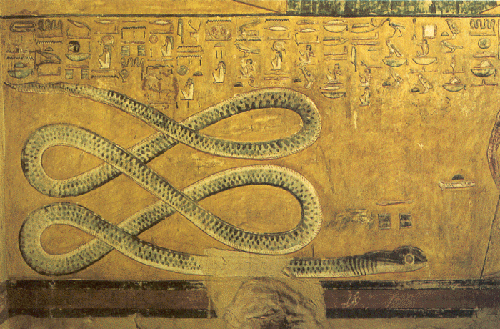
'After a time the boat floated through a dim gate flanked by two sarcophagi as tall as telephone poles, and the shore figures on the other side were screaming and shifting from side to side along the shore and over their frightened cries he could hear a slow metallic slithering. ‘Apep!’ the ghosts were shouting. ‘Apep!’ And then he saw a shape of blackness rising and it was the head of a serpent so vast that it dwarfed their freakish boat. Man-shaped forms dangled from its jaws, but it shook its ponderous head, sending them spinning away, and arched slowly towards the river.
“The serpent Apep,” whispered Romanelli, “whose body lies in the deep realms of the keeku samu where pure darkness becomes an impenetrable solid.” '
- Tim Powers, The Anubis Gates, 452
'One is ... tempted to see in the 'time paradox' of science-fiction novels a kind of "apparition in the Real" of the elementary structure of the symbolic process, the so-called internal, internally inverted eight: a circular movement, a kind of snare where we can progress only in such a manner that we 'overtake' ourselves in the transference, to find ourselves later at a point which we have already been. The paradox consists in the fact that this superfluous detour, this supplementary snare of understanding ourselves ('voyage into the future') and then reversing the time direction ('voyage into the past') is not just a subjective illusion/ perception of an objective process taking place in so-called reality independent of these illusions. The supplementary snare is, rather, an internal condition, an internal consituent of the so-called 'objective' process itself: only through this additional detour does the past itself, the 'objective' state of things, become retroactively what it always was.'
- Zizek, The Sublime Object of Ideology, 57
'Steampunk is a form of theodicy.'
- John Clute
Tim Powers' The Anubis Gates is a fabulously inventive variation on a time-travel theme.
The model is not the straightforward (or rather straightforward and straightbackward) structure established in Wells' founding text of the sub-genre Time Machine. Instead, The Anubis Gates follows the formal structure of the time (travel) paradox perfected by Robert Heinlein in stories such as 'All You Zombies' and 'By his Bootstraps'. The template for this kind of paradox narrative lies on the hinterlands between SF, Fantasy and Horror where Lovecraft's The Shadow out of Time and Through the Gates of the Silver Key can be found. But if those stories show the closed loop of chronos opening out into 'the unutterable Abomenon of the Outside (Nihil Ulterius)', then Heinlein and Powers merely trace the coils of ouroboros. The Anubis Gates confirms Zizek's claim that the closed loop paradox, far from threatening the collapse of chronic temporality, is the structure of the (Symbolic, Architectonic) Order itself.
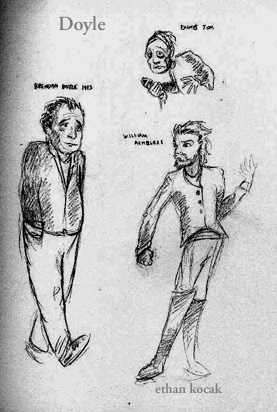
In The Anubis Gates, the academic Brendan Doyle is lured into a time-travel experiment by the eccentric plutocrat Clarence Darrow. Darrow is dying, and, whilst undertaking the prodigious and apparently deranged research he has pursued in a desperate bid to prolong his life, he comes upon the story of 'Dog-Face Joe' amongst the folklore of London in the early years of the nineteenth century. By a process of diligent scholarship and daring supposition, Darrow determines that Joe was a magician capable of transferring his consciousness from body to body, but whose body-stealing had an unfortunate side-effect: almost immediately Joe enters it, the purloined body grows profuse, simian-like hair, so that its new owner is forced to discard it very soon after switching into it. For obvious reasons, Darrow wants to acquire the secret of this profane transmigration, and he seems to have the means to make contact with the body-switching magician since his research has uncovered 'gaps' in the river of time, gates through which it is possible to pass into the past. Doyle's role is to act as a kind of literary tour-guide for the ultra-wealthy time travellers Darrow has assembled, attracted by the possibility of seeing a lecture by Coleridge, and whose million dollar fee will finance the trip.
Very soon after arriving in the nineteenth century, Doyle is abducted into a rhizomic underLondon that is part Oliver Twist, part Burroughs' The Western Lands. Powers' phantasmagoric London - the apocalyptic vividness of whose rendering led John Clute to the describe The Anubis Gates as 'Babylon-on-Thames punk' - is the site for a war between the forces of Egyptian polytheistic sorcery and the grey positivism of British Empire/empircism, involving romanys, ka duplicates, poets, beggars, costermongers, male impersonators....
After a while, Doyle comes, reluctantly, to accept his (literary) Fate - to be propelled, by means of SF, into the nineteenth century picaresque - and more or less gives up any hope of returning home. He resigns himself to make the best of his nineteenth century life and decides that his most realistic hope of an escape from beggary is to make contact with William Ashbless, the minor poet in whose works he has specialist knowledge.
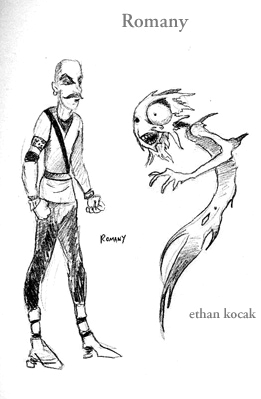
Doyle goes to the Jamaica Coffee House on the morning in which, according to Ashbless' biographer, the American poet will write his epic poem, 'The Twelve Hours of the Night'. The appointed time arrives, but there is no sign of Ashbless. While he waits, at first agitated and then deflated, Doyle idly transcribes 'The Twelve Hours of the Night' from memory.
He is soon caught up in more intrigue and, for a while, forgets about Ashbless. In one of the most uncanny moments in the book, Doyle hears, or fancies he hears, someone whistling The Beatles' 'Yesterday'. It is only after he catches the refrain being whistled again a day or so later that he is able to confirm that there are indeed a group of twentieth-century temporal emigres living in 1810 London. They turn out to be Darrow's people, given the task of helping in the search for Dog Face Joe. Doyle meets with one of them, his former student, Benner, who by now is a paranoid and grizzled wreck, convinced that Darrow is out to kill him. He and Doyle agree to meet again a few days later, but when they do, Doyle finds his fomer friend's behaviour is even odder than before. Doyle discovers the reason for this too late. Benner's body has been acquired by Dog Face Joe. This becomes clear to Doyle only when he finds himself in Benner's body, after it has been discarded by Joe.

Everything is now in place for the revelation that shocks Doyle but which is, by now, no surprise at all for the reader: Doyle IS Ashbless. Or rather: there is no Ashbless (except for Doyle). Doyle only begins to process the full implications of this when he contemplates the peculiar (a)temporal status of the 'Twelve Hours of the Night' manuscript.
“It hadn’t […] come to too much of a surprise to him when he’d realized, after writing down the first few lines of ‘The Twelve Hours of the Night’, that while his casual scrawl had remained recognizably his own, his new left-handedness made his formal handwriting different – though by no means unfamiliar: for it was identical to William Ashbless’. And now that he’d written the poem out completely he was certain that if a photographic slide of the copy that in 1983 would reside in the British Museum, they would line up perfectly, with every comma and i-dot of his version perfectly covering those of the original manuscript.
Original manuscript? He thought with a mixture of awe and unease. This stack of papers here is the original manuscript… it’s just newer now than it was when I saw it in 1976. Hah! I wouldn’t have been so impressed to see it then if I’d known I had made or would make those pen scratches. I wonder when, where and how it’ll pick up the grease marks I remember seeing on the early pages.
Suddenly a thought struck him. My God, he thought, then if I stay and live out my life as Ashbless – which the universe pretty clearly means me to do – then nobody wrote Ashbless’ poems. I’ll copy out his poems from memory, having read them in the 1932 Collected Poems, and my copies will be set in type for the magazines, and they’ll use tear sheets from the magazines to create the Collected Poems! They’re a closed loop, uncreated!… I’m just the …. Messenger and caretaker.” (330-331)
Like his unhappier time-displaced fellow, Jack Torrance, Doyle has always been the caretaker (and nothing but?)
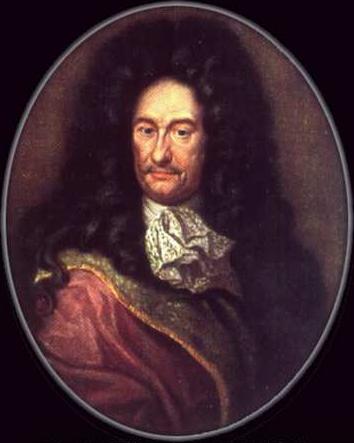
Fictionally speaking, the 'Twelve Hours of the Night' is another kind of duplicate, since a similarly atemporally insistent text (in this case a notebook) is at the heart of Heinlein's 'By His Bootstraps'. The concept of such a text originates, though, not in SF but in Leibniz's demented rationalism. To illustrate his claim that 'we cannot find in any of the individual things, or even in the entire collection and series of things [of the universe], a sufficient reason for why they exist', Leibniz offers the following analogy:
'Let us suppose that a book on the elements of geometry has always existed, one copy made from another. It is obvious that although we can explain a present book from the previous book from which it was copied, this will never lead us to a complete explanation, no matter how many books back we go, since we can always wonder why there have always been such books, why these books were written, and why they were written the way they were. What is true of these books is also true of the world, for the state which follows is, in a sense, copied from the previous one, though in accordance with certain laws of change.' ('On the Ultimate Origination of Things')
Rehearsing the logic of Aquinas' cosmological argument, Leibniz's conclusion is that there then must be 'One Being who rules the universe...[and who] fashions and creates it', a Being which 'is above the world, and, so to speak, extramundane, and therefore ... is the ultimate origin of everything.' As Russell and others have pointed out, though, this 'proof' of the existence of Jahweh is anything but: it merely sets up the bad infinity of transcendence, which is always pseudo-transcendence, since every attempt to posit 'an Ultimate Origin of Things', a meta-level above all meta-levels, the set of all sets, is destined, by its very nature, to fail. There is no better statement of this than Douglas Hofstadter's in Godel, Escher, Bach:
'Achilles: ... You mean that GOD sits up at the top of the ladder of djinns?
Genie: No, no, no! There is nothing "at the top", for there is no top. That is why GOD is a recursive acronym. God is not some ultimate djinn: GOD is the tower of djinns above any given djinn. (114)'
This shifts us from the transcendementia of the cosmological argument to that of the ontological argument, which, as Brian McHale argues in Postmodernist Fiction is 'grotesquely parodied' by Beckett in The Unnamable.
'God is that than which nothing greater can be thought, said Anselm. Now if that than which no greater can be thought existed only in the mind, then a greater could still be thought after all, namely a being who existed in extramental reality. Therefore, so runs the syllogism, God must exist not only mentally but also in reality. The Unnamable parodies this astonishing feat of pulling-oneself-up-by-one's-boot-straps by showing that no matter how "high" his imaginings go, no matter how many recursive authors and authors-above-authors he projects, he can never get outside of his own imaginings to the reality of his ultimate creator. There is an absolute "ontological" ceiling which retreats as he approaches it.' (13)
The ontological problem in The Anubis Gates is quite different of course.
The ontological scandal presented by Ashbless' collected poems is not that there is some 'ultimate creator' which cannot be reached, but very much to the contary: the ex- or rather IN-sistence of the poems establishes that they could not have a creator of any kind, only a caretaker-transcriber. And what displaces Leibniz's transcendent God is the 'miracle' - or rather the miraculation (Deleuze-Guattari) - of the appearance-insistence of the Text itself. But, we have to insist, with Lacan, that this is all God always-already was. Or to put it another way, the mono-theistic God IS the always-already.
That is what Lacan establishes in his typically gnomic reading of 'Moses and Monotheism'. 'The Death of God' (in the seminar on The Ethics of Psychoanalysis) does little more (but this is vast) than slavishly draw out the implications of Freud's rigorous demonstration that the foundation of mono-theism IS the destruction of all foundations. When the beta males rise up to kill Pere Jouissance (the alpha male 'father who enjoys'), they find, to their horror, that, ar from having access to the unlimited enjoyment that they imagined was available to the patriarch, they occupy the position of the always-already mortified, the scions of guilt-plague: in other words, the role of the big Other itself. Jahweh never exists, he insists (in the troubled unconscious of his usurper-propagators). Jahweh is never present, he persists (through his absence, not only maintaining but defined by what theologians call 'epistemic distance'.)
What makes all this utterly contemporary is the flattening of God into the big Other. Postmodern/ deconstructive negative theology likes to pose as a textualist-relativist deviation from a spectral Orthodoxy that is supposedly characterised by its rigidity and dogmatism. But Freud-Lacan's analysis allows us to see that, just as the homicidal-oedipal apes find there is no God but the space of the absent God which they themselves occupy, so Orthodoxy only persists via its retrospeculative positing in the talmudic quibbling of those who endlessly announce their deviations from 'doxa'. To return to The Anubis Gates: so far as postmodern power goes (it's dead but it lives on - Land) there is there is no orthodoxy, there is only parodoxy.

As Deleuze-Guattari and Zizek both acknowledge, Kafka is the prophet of the already-dead God and the double-binding 'control virus' (Burroughs) in which it is instantiated. Eschatology and the Last Judgement are misdirections, teleological confidence tricks concealing the 'fatal strategies' (Baudrillard) through which Control immanently operates, now. The predicament in which K, as the postmodern subject par excellence, finds himself is not that of someone awaiting judgement, but of someone enduring 'indefinite postponement'. The big Other does not exist, it insists as virtual vampiric structure whenever it lures dupes (us) into endlessly petitioning it for recognition and/or acquittal. It was in this sense that Orson Welles was perfectly right to say that K is 'guilty as hell'. Guilt is the a priori condition for those inserted into the Control machine, whose lineaments were described with terrifying precision by Burroughs, Kafka's real successor. Control precisely does not issue rigid commands, but complementary yet contradictory injunctions, themselves always provisional and 'subject to review'. The coherence of the Control hyper-entity can only ever be virtual; it doesn't pre-exist the subject of Control. Very much to the contrary, it is the very attempt to make sense of the 'obviously' incommensurate and prima facie senseless injunctions it issues that constitute what minimal coherence Control has. As Kafka's hapless peitioner discovers, the door is meant only for you. But behind the door is the metastatic God Over Djinn bad infinity of metanoiac postponement. Ceaseless seamless bad dream corridors.
'We know that Mr D never told any of his agents any more than the uh minimum consistent with the performance of their uh duties and that this Minimum Information - M.I. - was expressed in mathematical formulae. We know that Mr D lied to all his agents. I suggest that he lied to you, doctor. I suggest further that you are not the Mr D. That the Mr D does not in fact exist but is simply the hypothetical quantity at the end of an infininte series of which you and Mr Martin are the uh lower integers.' (Burroughs, 'Ancient Face Gone Out', 18)
That is why the Nietzschean critique of grammatology (we'll never get rid of God until we get rid of grammar) not only fails to move beyond the dead God, it sustains that God in its undeath. Nietzsche's claim, in The Genealogy of Morals that there is no actor-subject behind actions is both too slow and too quick. Too slow, because, as we have seen, the non-existence of the mono-theistic meta-subject is the founding moment of mono-theism. Too quick, because there is, in fact, a subject, albeit one that is only ever empty, 'barred'.
To demonstrate why this is so, we can return (at last!) to The Anubis Gates. What is the difference between Doyle and Ashbless? The quick answer, 'nothing' is tempting, but misleading. Or rather, 'Doyle' is that 'nothing' which is the difference from Ashbless. This 'nothing' is what Lacan means by the barred subject.
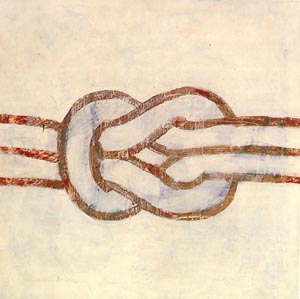
Zizek quite rightly makes the connection between Lacan's famous slogan 'the letter always reaches its destination' (from Seminar XI's epochal 'The Agency of the Letter and the Unconscious', the reading of Poe's 'The Purloined Letter') and time paradox stories. As he explains, at one level, 'a letter which always arrives at its destination points at the logic of recognition/misrecognition (reconnaissance/méconnaissance) elaborated in detail by Louis Althusser and his followers (e.g. Michel Pęcheux): the logic by means of which one mis/recognizes oneself as the addressee of ideological interpellation. This illusion constitutive of the ideological order could be succinctly rendered by paraphrasing a formula of Barbara Johnson: "A letter always arrives at its destination since its destination is wherever it arrives." Its underlying mechanism was elaborated by Pęcheux apropos of jokes of the type: "Daddy was born in Manchester, Mummy in Bristol, and I in London: strange that the three of us should have met! In short, if we look at the process backwards, from its contingent result, the fact that events took precisely this turn could not but appear as uncanny, concealing some fateful meaning — as if some mysterious hand took care that the letter arrived at its destination, i.e., that my father and my mother met.'
The Oedipal reference here is of course no accident (and part of the point is that the unconscious is rigorously Spinozistic in its rejection of the very category of the accidental; as Freud shows in 'Beyond the Pleasure Principle' the unconscious transforms apparent contingency into metaphysical Necessity via repetition) because the Oedipus myth is itself a closed loop paradox: 'one knows in advance one's destiny, one tries to evade it, and it is by means of this very attempt that the predicted destiny realizes itself.' (Sublime Object of Ideology, 58)
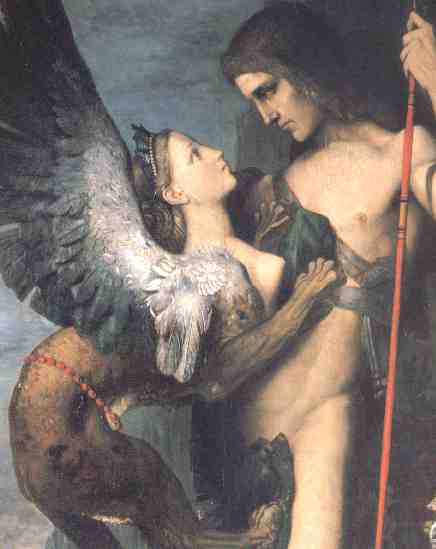
Thus the closed loop time paradoxes in science fiction are in a sense the 'comic' postmodern counterpoint to the closed loops of classical tragedy. What makes the Oedipus myth (post)modern from the start is the fact that, as Alenka Zupancic explains, it is a kind of initation in reverse. Oedipus does not have to struggle to overcome a Female-Thing (the Sphinx yields easily) nor to best an omnipotent Symbolic Father (his father is just a rude old man). Oedipus 'travels the path of initiation (of 'symbolization') in reverse and, in so doing, he experiences the radical contingency of the Meaning borne by the symbolic.' (Ethics of the Real, 192). In other words, instead of first of all experiencing his parents as mighty agents of the symbolic, only to become disillusioned later when he realises that they are 'just people', Oedipus first of all encounters 'mere people' then, only afterwards, realises that these quotidian nothings - these happenstance wretches - were no less than his Mother and Father. Oedipus' problem, then, is that of the always-already dead God, the father who cannot live up to his undead role as Father. 'So THAT was the the father!'
Doyle's initiation is similar but subtly different. The Ashbless Enigma that he encounters first is comically deflated once he realises that - at some level - the solution is only him. 'I wouldn’t have been so impressed to see it then if I’d known I had made or would make those pen scratches.' But the deflation is immediately followed by a profound dread and awe (the poems are uncreated!) that far exceeds his original fascination with the poet.
Once Doyle realises that he is destined to be Ashbless, which is to say, that he always-already was Ashbless, he is posed with a dilemma: does he act in accordance with what he hypostasises as the will of the universe (it is the 'universe' that 'wants' him to live in Ashbless' shoes), or not? The problem that Doyle faces is that the determinism is much harder than a will, even a will that belongs to 'the universe'. What he literally cannot process is that everything he has done as Ashbless has already happened. The barrier that means that this cannot be faced is transcendental: subjectivity as such presupposes the illusion that things could be different. The Kantian demand that we must think of ourselves as if free turns out to be a transcendental law rather than a meta-ethical injunction. To be a subject IS to think of oneself as if free. What sustains this for Doyle is the apparently spontaneously emerging hypothesis of an 'alternative past': in order to hold open the possibility that things might go against the already-recorded Ashbless biography, Doyle is forced to consider the possibility that he has somehow crossed into 'different past' to the one he has seen documented. But the full Zizekian paradox is that it is only Doyle's positing of such an 'alternative past' that ensures that he acts in accordance with what has already happened. The letter always arrives at its destination. Ashbless becomes the hero he already was, the restorer of an Order that was never threatened: the 'harlequinade of magicians and other villains ... know their place', and the 'Adamic Doyle' will have always thwarted the 'generically familiar templates whose attempts to spook England into decline and corruption and despair' (Clute).
The difference between Doyle and (Oedip)us is only that Doyle is more aware of the Necessity that he is (even if such awareness is part of the very Necessity of which it seems to offer knowledge). From the point of view of Spinozism, of course, 'we' are no more 'free to avoid Necessity' than is Doyle. Sub specie aeternitatas, everything has already happened, but we, too, are unable to give up our belief in 'possible worlds', our conviction that things could have been different from what they always had to be.
So it is that the ouroboros coils around us.
'His destiny moves us only because it might have been ours - because the oracle laid the same curse upon us before our birth as upon him. ... While the poet, as he unravels the past, brings to light the guilt of Oedipus, he is at the same time compelling us to recognize our own inner minds...'
Posted by mark k-p at March 17, 2005 12:26 AMMark, just some initial sparks: the strange draco-spiralism depicted in figures 1 and 2 is not originally a manifestation of the eternal fang-tail dynamism of ouroboros as ouroboros itself originates from a far more ancient entity. Archeological investigations during the 80s confirmed that these draco-spirals (a coiling serpent, a serpent swallowing itself, etc.) initially come from an unfathomably ancient entity which later resurrected in Persian and Mesopotamian and later European Mithraism, spread in all religious threads (even threads of monotheism): Zravan Akarana whose tetra-winged body is always surrounded by coils of a serpent (ouroboros is a horizontal segment of this coil) whose function is uncreation through Aeonian chrono-abyss. Zravan Akarana (the UnTime) presents the burning line of flight (usually pictured with flaming eyes and a mouth filled with black flame) out of the time which belongs to creation and the divine (the creator and the created), in later manifestation of Zravan Akarana, the tetra-winged body disappears (as the main body of Zravan) and the coil remains, segmented to ouroboros, chrono-dimensions and modes of templexity. I will post a full articles on Solar flight, Zravan and Islamic Salat soon. Will try to scan a picture of Zravan, think it fits your post perfectly. interestingly, when Zravan flies out of time, the consequence is creation but it is not the creator (in early Avesta, Ahura Mazda and Ahriman both claim that they don't have a father although they emerge from Zravan).
Posted by: Reza at March 20, 2005 10:55 AMmark - trying to wrap this time loop around my mind. i'm moebically perplexed how to work it magically or hyperstitionally. do you start in the past, the present or the future? i may be wrong, but regardless of where you start it requires some type of recognition? from the past you recreate something from memory and recognize you're the "carrier". starting from the "future" is still kinda fuzzy. but, starting from the "present" seems to involve deciding what thing you're going to "misrecognize" and transform it by "recognition". argh. what a puzzle. another boggy area involves deciding what "fiction" to use.
Posted by: northanger at March 22, 2005 05:58 AMreza (9) - i know i know. {sing-songy} the most ancient old thingys found only in Persia & Mesopotamian. however, worthy mention: TELI appears in Sefer Yetzirah 6:1 "He set them in the Teli, the Cycle, and the Heart."
Aryeh Kaplan's comments posted here: http://www.livejournal.com/users/northanger/5533.html
searching "Zravan Akarana" found "Essential Origins Of Zoroastrianism" -
main link: http://tenets.zoroastrianism.com/
three papers by "Dr. Framroze Sorabji Chinivala, Opthalmic Sergeon, 1942, Published by the Parsi Vegetarian and Temperance Society of Bombay" - Introduction and Chapters of Essential Origins Of Zoroastrianism, Essential Origins Of Zoroastrianism, Sequel to Essentials of Zoroastrianism.
from "Essential Origins Of Zoroastrianism"
http://tenets.zoroastrianism.com/EssentialOriginsOfZoroastrianismFull.pdf
Zarvane Akarne = Endlessness.
"The number 1 denotes the ultimate goal that the Universe has to reach, i.e. to be submerged in the One without any compeer, Unfathomable, Unknowable. Zero denotes the helplessness of even Fravashi to fathom the Great One, and the sign ‘(-)’ minus denotes the One and the Only One, who is beyond the domain of Law, Whom the thought of even Yazatas can never reach. The sign plus denotes the outcome of the Universe of both the immortal and mortal types. The symbol of circumference with a centre and a radius O denotes Zarvane Akarne i.e. energies without limit possessing deified powers, called Khshathra. This Zarvane Akarne is the authoritative genius of each one of the immortal seven tenses having deified import as good as that of Yazata who are the deified 'harmony-cloak' of Ahuramazda. This Zarvane Akarne leads to desired end, all possible 'times and spaces' conceivable accruing from it in the most frugal manner, rotating and working upon the centre of Asha according to the principles Asha i.e., Order Divine with radius i.e. power uncontested. This symbol of Zarvane Akarne is taken also as the symbol of the power of the Yazata the immortal beings affiliated to Ahu who with their power of this zero like circumference of Zarvane Akarne say that they know nothing about the Great Ahu, i.e. they know zero about Him. But this zero of Zarvane Akarne instructs them that they have to go by the Divine Edict-Ahuna-Vairya-and the associated Loyalty-Fravashi-to work out the Razeng the mystery associated with number 3, i.e., to evolve the mortal Universe, take it to the extreme end of rigidity, mortality, materialism and then turn it back to immortality and the Great One after due Connotation of improvement. Thus the Yazatas, who denote the import of +plus, i.e. who are the outcome of the Great One are invested with Zarvane Akarne powers to work out the mysterious number 3, mysteries of number 3, in order to take it to the mystery of number 9."
Posted by: northanger at March 22, 2005 05:59 AMReza, interesting, but the second fig is not Ouroboros but Apep, from Egyptian mythology. I've seen some pictures of Apep in which it is portrayed as a winged serpent. Is Zravan Akarana older than Apep I wonder?
Posted by: mark k-p at March 25, 2005 08:54 AMYes Mark, it’s Apep, the winged serpent which also connected to Sumerian mythologies and later ouroboros and is directly connected to Zravan. The first headless figurine of Zravan which has been discovered in south of iran belongs to approx. 9500 years ago (before Aryans settled in Iran plateau), which is older than Sumero-Babelian draco-spiralistic figures (Tiamat, Nergal, etc.) the strange thing about the archeological discoveries is that Zravan sometimes has been introduced as the primal Ahriman who is presented as three dots (cosmic unlocalizability), only in later Avesta and indic culture it is introduced as something neutral or related to Ahura i.e. a demiurge and Yazd [God] (looking at the pics I sent, you can easily realize it's not very friendly), later three dots become four dots (square and is an element in constructions associated to Yazds and later Allah i.e. Kaaba or Cube which in Sanskrit means to lay down, to stretch over a surface and is the basic architectonic form for worshiping by offering a 'place to' a deity; Kaabas were very popular in early Zoroastrianism and are somehow different from Sumero-Akkadian Ziggurats in their exclusive functions to worshiping deities) and constitute a swastika. Think your post is great for discussing Chronomancy / Time-traveling potentials of hyperstition and their connections to Mesopotamian mythoi. But this needs an effective contribution from Barker, Sarkon, Linda Trent, et al. (see the picture: http://hyperstition.abstractdynamics.org/archives/Dots.gif)
There are also a couple of ciphers (not decoded it) which are associated to Zravan: (http://hyperstition.abstractdynamics.org/archives/Ciphers.gif)
two types of draco spirals—apep (apophis) = disorder // ouroboros = order. apep (evil serpent, nachash) strives to destroy cyclic order (sun) with apophetic formulas to restrain, crush, dismember, & destroy by fire (appearing in many egyptian funerary rites). ((donald tyson's apocalytic theory re enochian angels + choronzon fits here))
word associations: apophetic - apocalyptic // apophis - aphesis. aphesis (releasing; "releasing of a debt") appears in NT & hellenistic astrology. in astrology, aphesis determines time lord governance: you must "serve" or "live out" the time period described by a time lord until a debt is paid; only intervention can cut this short. NT usage: "For this is my blood of the new testament, which is shed for many for the remission [aphesis] of sins". this appears in luke 4 after jesus tempted by satan (apep?). afterward, he returned to nazareth & read a prophecy from isaiah in the synagogue: "To preach the _acceptable year_ of the Lord". may be some similarities here: "Taghieh ‘originally’ means a strategic (dis)simulation; the belief of the concealment of the true beliefs in situations where harm or death will definitely be encountered if the true beliefs are declared."
Posted by: northanger at March 27, 2005 01:28 AM